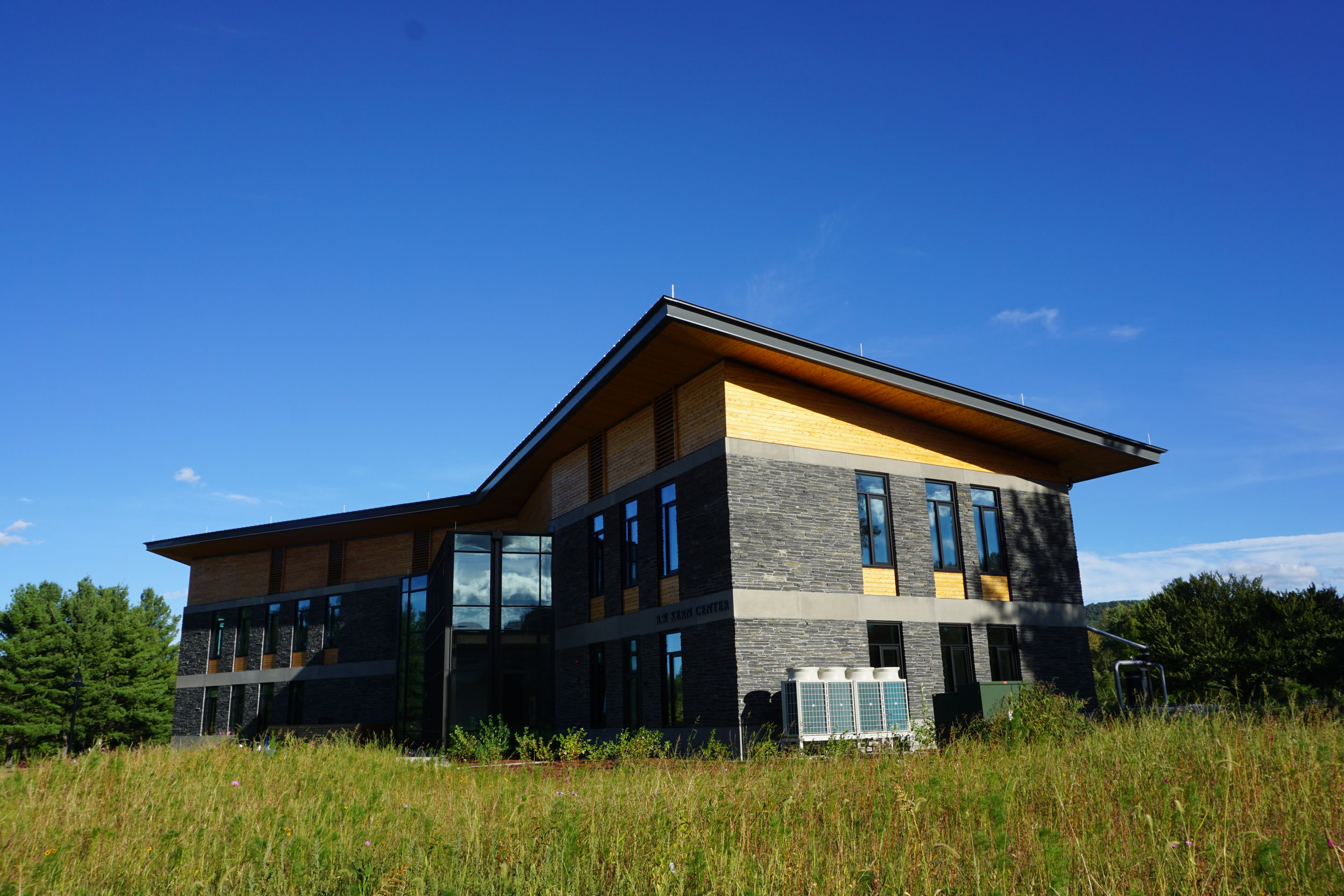Photo by Eva Zhan '19
BY NICOLE VILLACRES '18
Hampshire College broke ground on the installation of 15,000 solar panels on Aug. 5, which will generate 100% of the school's electricity. The college will be the first residential college in the U.S. to run completely on solar energy.
The panels will span two sites covering 19 acres, one site located behind the college's sports facility and the other across from Atkins Country Market. With the switch, Hampshire will eliminate 3,000 metric tons of CO2 emissions and save $400,000 per year, according to a statement released by the college. The amount of CO2 emissions removed is the equivalent of 650 cars no longer being on the road.
"They're far less harmful than blowing up a mountain to get coal, stripping arctic tundra to excavate tar sands, or burning coal in an urban neighborhood," said School of Natural Science Dean Steve Roof regarding the visibility of the panels, as quoted on the Hampshire Website.
SolarCity, a solar energy company, is in charge of installation and maintenance of the panels and will be selling the electricity to Hampshire at a fixed rate. The college will be able to offer excess electricity to the community, according to Hampshire College representative John Courtmanche, as reported in the Daily Collegian. Construction is estimated to wrap up in Dec., with the panels active in spring 2017, but will not affect campus operations.
"Hampshire students have not lived through a normal climate year," said Dean Roof, as quoted in the Hampshire Website. In his remarks at the groundbreaking ceremony for the panels, Dean Roof attempted to illustrate the effects of climate change and how the last time global temperatures were below average was Dec. 1984.
The Hampshire Board of Trustees had approved a plan for the switch to solar energy in Feb. 2015 as a part of the college's involvement with the Carbon Commitment. The Carbon Commitment requires schools to develop a Climate Action Plan that will work toward carbon neutrality and has 336 affiliated institutions, according to the Second Nature website. Mount Holyoke has yet to join the initiative.
"I don't blame Mount Holyoke for not signing on with the initiative. Instead, I think it highlights the systemic struggles of committing to divest," said environmental studies major Kaila Cantens ’17, who interned with the Sierra Club in D.C. last spring.
"We don't know the inner workings, the back room talks, the amount of money and politics that go into going carbon free. The amount of investments in carbon based energies are so huge that it is extremely difficult to change. Not impossible, but difficult," said Cantens.
Hampshire's R.W. Kern Center, its central campus building, was also built in conjunction with the Carbon Commitment. It is one of only eight structures built to receive the Living Building Certification, pending a year of operation. The certification requires that the total amount of energy used by the building is equal to the amount of renewable energy created on site, reports a statement released by the college. The certification also requires that all materials be sustainable and locally sourced, when possible.
Both projects are integral aspects of Hampshire's sustainability initiative, which launched in 2011. Hampshire has a commitment to reaching carbon neutrality and showing how those efforts enhance their overall mission in research, education and social justice.
Dean Roof noted how climate change has severely affected poor communities and that, "those of us whose communities have most benefited from fossil fuels have a moral obligation to those who are suffering the worst effects," as reported on the Hampshire website.
"Schools like Hampshire allow us to see the future, so that others can see what is possible and strive for it. They are the ones breaking barriers and paving the way," said Cantens.

